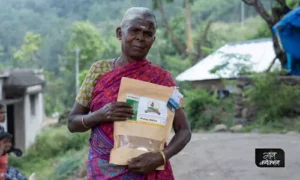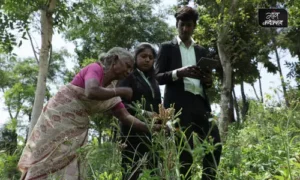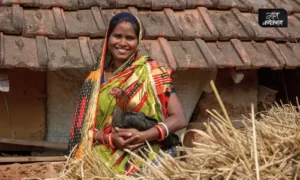Srinagar, Jammu & Kashmir
It is early May and the upper reaches of Jammu & Kashmir have received fresh snowfall. This has halted the bi-annual migration of the nomadic tribes of the Union Territory, who move to higher altitudes, along with their cattle, seeking pastures during the summer season. The weather is expected to get better from tomorrow, May 5.
Whereas the northern Union Territory has been receiving rounds of snowfall in late March and April this year, it received little precipitation during the peak winter season, locally known as Chillia Kalan. This harshest period of winter lasts between December 21 to January 31.
According to the data of the Meteorological Department J&K, there was 34 per cent below precipitation (snowfall and rainfall combined) during this recent winter in Kashmir. The valley received 188.9 millimeters (mm) of precipitation against a normal of 248.9 mm between December 1, 2022 to January 31, 2023.
Similarly, in February and March this year, the valley received 40.7 mm and 78.9 mm of precipitation against a normal of 130.4 mm and 152.9 mm, respectively. This is a decline of 69 per cent and 48 per cent in precipitation during these two months, respectively.
In sharp contrast, in April 2023, Kashmir received 113.5 mm of precipitation against a normal of 99.6 mm, which is an increase of 14 per cent.
Also Read: Getting Hammered from Pole to Pole and Tropic to Tropic
Sonam Lotus, director Meteorological Department J&K, told Gaon Connection that there was a deficit precipitation during winter this year, but April has seen excess rainfall coupled with snow in many parts of the valley. “Kashmir has had cloudy weather, rainfall and dip in temperature for the last two weeks resulting in recent snowfall in the upper reaches,” Lotus said.
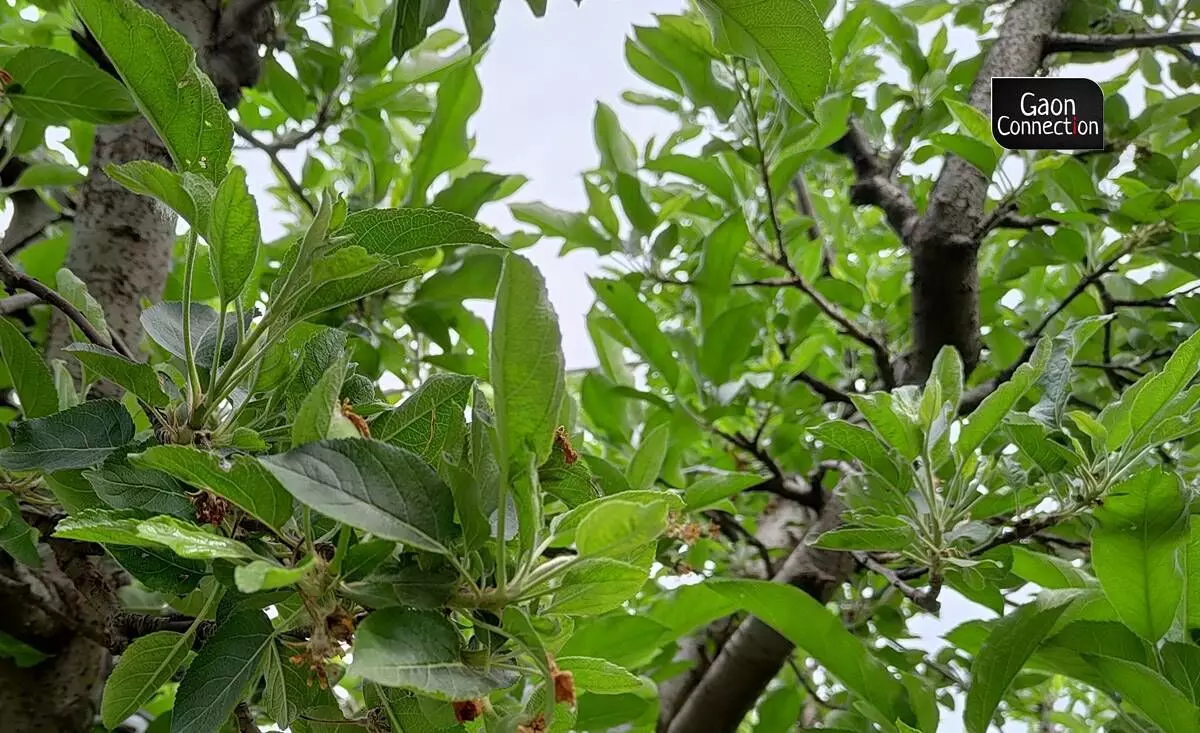
In sharp contrast, in April 2023, Kashmir received 113.5 mm of precipitation against a normal of 99.6 mm, which is an increase of 14 per cent.
According to weather experts, over the years, Kashmir valley has been erratic weather conditions and less precipitation during winters, which could impact agriculture, horticulture and generation of hydro-electricity.
This winter, the Valley received very less snowfall during Chillai Kalan. After mid February, there was a sudden rise in temperature and very little precipitation. The temperature in early March reached above 25 degree Celsius. In April, there has been above normal precipitation and the maximum temperature again dipped to 15 degrees C.
There is a trend of decline in winter rainfall in the Valley. The IMD data shows that in the previous winter, between December 2021 and January 2022, the Kashmir Valley received 262.5 mm precipitation against a normal precipitation of 288.4 mm, which is nine per cent deficit.
The year before that, between December 2020 and January 2021, the Kashmir region received 180.9 mm precipitation with a deficit of 37 per cent (compared to normal).
Also Read: KCC scheme brings prosperity to horticulture farmers in Ganderbal, J&K
Irfan Rashid, who teaches at the Department of GeoInformatics, University of Kashmir, said that Kashmir has been receiving less snowfall during winter and witnessing an early rise in temperature in March due to global warming, which could have an impact on various sectors.
“Less snowfall and early rise in temperature leads to faster melting of glaciers. Besides, it is affecting the generation of hydro power and the horticulture sector. There will be less water in streams in summer when there is early melting of glaciers resulting in agriculture and horticulture sectors being badly affected,” Rashid said.
Farmers complain that above normal temperatures in March this year led to early sprouting of apples and other fruits. “Then in the second week of April, there was a sudden dip in temperature. This untimely weather condition may hit the production of various crops this year,” Mohammad Amin, an apple grower from North Kashmir’s Sopore, told Gaon Connection.
Horticulture is the mainstay of Kashmir’s economy with 700,000 families directly or indirectly associated with the sector. Horticulture contributes over eight percent to the Gross Domestic Product (GDP) of Jammu and Kashmir. More than 338,000 hectares of land is under the fruit cultivation in the valley, of which 162,000 hectares is dedicated for apple cultivation.
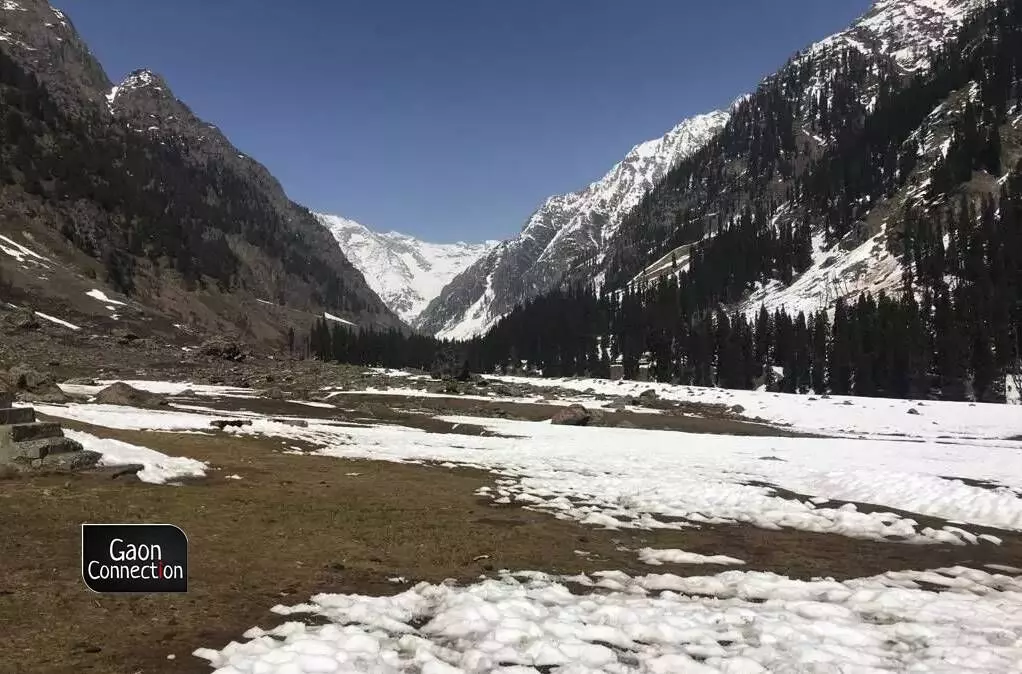
The IMD data shows that in the previous winter, between December 2021 and January 2022, the Kashmir Valley received 262.5 mm precipitation against a normal precipitation of 288.4 mm, which is nine per cent deficit.
Also Read: The Nadru Harvesters of Kashmir
An official of National Hydroelectric Power Corporation said they will come to know the impact of dry weather in winters on generation of hydroelectricity in the coming months. “The snow has started melting due to the difference in temperature. So there may not be proper generation of hydroelectricity when the flow of water will be less in summers,” he said on the condition of anonymity.
J&K has hydropower generation potential of 20,000 megawatt (MW) of which over 3,000 MW have been harnessed so far.
According to Lotus, the weather patterns change every year. “In one year, there is a deficit of rainfall and in another year, there is excess rainfall. These erratic weather conditions prevail due to climate change across the world,” he said.
Also Read: Dairy Farming Gets a Fillip in Shopian, Kashmir
Meanwhile, Faizan Arif, Kashmir-based independent weather forecaster, said that data suggests there has not been a significant decline in precipitation. “This winter there was less precipitation and next year we may see normal or excess as El Niño is expected to return,” he told Gaon Connection.
El Niño and La Niña are the warm and cool phases of a recurring climate pattern across the tropical Pacific — the El Niño-Southern Oscillation, or “ENSO” for short. The pattern shifts back and forth irregularly every two to seven years, bringing shifts in ocean surface temperature and disrupting the wind and rainfall patterns across the tropics. These changes have a cascade of global side effects.
“The National Oceanic and Atmospheric Administration describes ENSO as one of the most important climate phenomena on earth due to its ability to change the global atmospheric circulation, which in turn, influences temperature and precipitation across the world. J&K receives below normal precipitation in the winter season during a La Niña year,” he said.
Also Read: Almond cultivation in Kashmir proving to be a hard nut to crack







